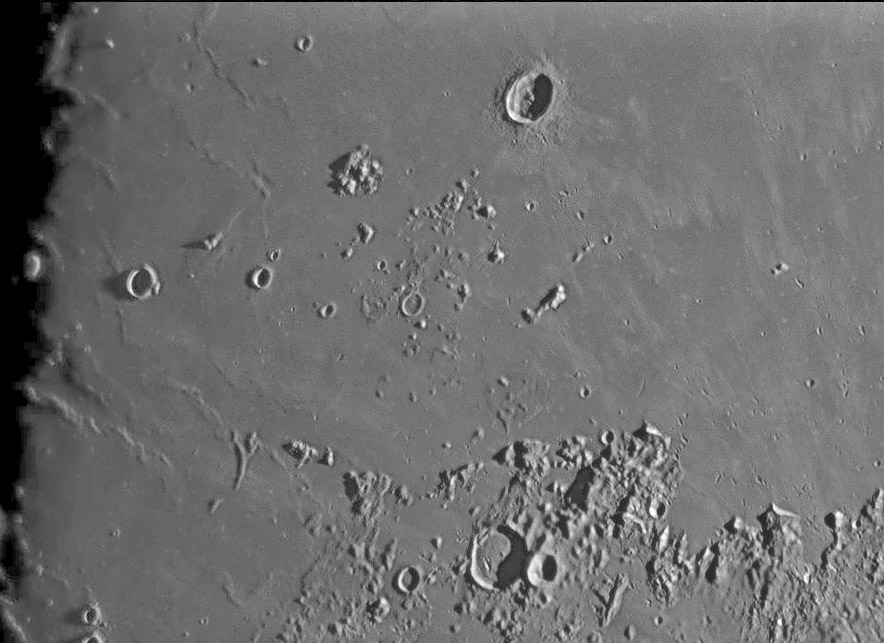June 24, 2018
Natasha Hills
Originally published March 21, 2009

image by Milton Aupperle, Calgary Alberta, Canada
Is this the least observed piece of the Imbrium Basin? It can't compete with the Apennnes, Plato, Sinus Iridum, or even the Harbinger Mountains (well, maybe), but this southwestern edge of the Imbrium Basin is starkly simple to see even while harder to understand. Along the bottom right is the Carpathian Mountains - the continuation from the Apennines of the main morphologic rim of the Imbrium Basin. The unnamed wrinkle ridges to the left do not continue the trace of the basin rim because they don't curve around toward the north to ultimately come ashore at the Gruithuisen Domes (as we think the basin rim does). Inscribing a circle through the Apennines and Carpathians implies that the missing rim should pass west of the scattered hills near image center. These hills lack a formal name although they have been called the Lothrop Hills, (but no one seems to know who Lothrop was) and the Euler Hills, but with the giving of the name Natasha to the 12 km wide flat-floored crater near them, perhaps it is inevitable that they become known as the Natasha Hills. Regardless of what we call them, what is the origin of these hills? They can't be the rim of a buried crater, and they aren't arc-ed like an inner Imbrium ring. Perhaps they are a jumble of debris that slid off a once higher Carpathian scarp - like the Archimedes Mountains. Perhaps it was such a huge collapse that the basin rim itself was whooshed away; this might explain why the Carpathians stop just where the Natasha Hills might have come from. Such mega-slumping might also explain the peculiar Vinogradov Mountain. You could cut out a circular hole in the mountainous area in the Carpathians and it Would look like this mountain.
Chuck Wood
Technical Details
March 6, 2009, 23:01 to 23:14 MST. Celestron C8 @ f/25 using 2.5X Televue barlow + green AstroDon E series filter + "Grasshopper" 1384x1036 16 bit FireWire camera, 15 fps, three movies, 110 best frames of 700 per; MAP with 76, 71 and 47 points, stacked, sharpened stretched and image processed in Astro IIDC.
Related Links
Rükl plate 19
This image is from a large mosaic
Note: Sorry for the lack of LPOD yesterday. I started one - this one - but was too tired to complete it. Next week I will be at the Lunar & Planetary Science Conference in Houston and may not be able to pull together an LPOD each night. We'll see.
Yesterday's LPOD: Swell Wichmann
Tomorrow's LPOD: Natasha Hills
COMMENTS?
Register, Log in, and join in the comments.



